There was a palpable, tense undercurrent in the car.
We’d spent the previous day on a 10 hour drive from the cool and green Bomdila to the horrible dusty town of North Lakhimpur. We’d been pelted with bananas en route by gregarious, drunk revellers and the only hotel we found in North Lakhimpur was shabby at best. The breakfast was cold and unappetizing. This was the last leg of our Arunachal journey before heading to the stunning Ziro valley and the Ziro Festival of Music and we had another 6-hour drive ahead of us on roads that even our driver was unsure of. If someone had even hinted at turning back and heading elsewhere we might have jumped at it, but we soldiered on, two weeks into our driving trip around the magnificent state of Arunachal, to a village that couldn’t be found on Google.
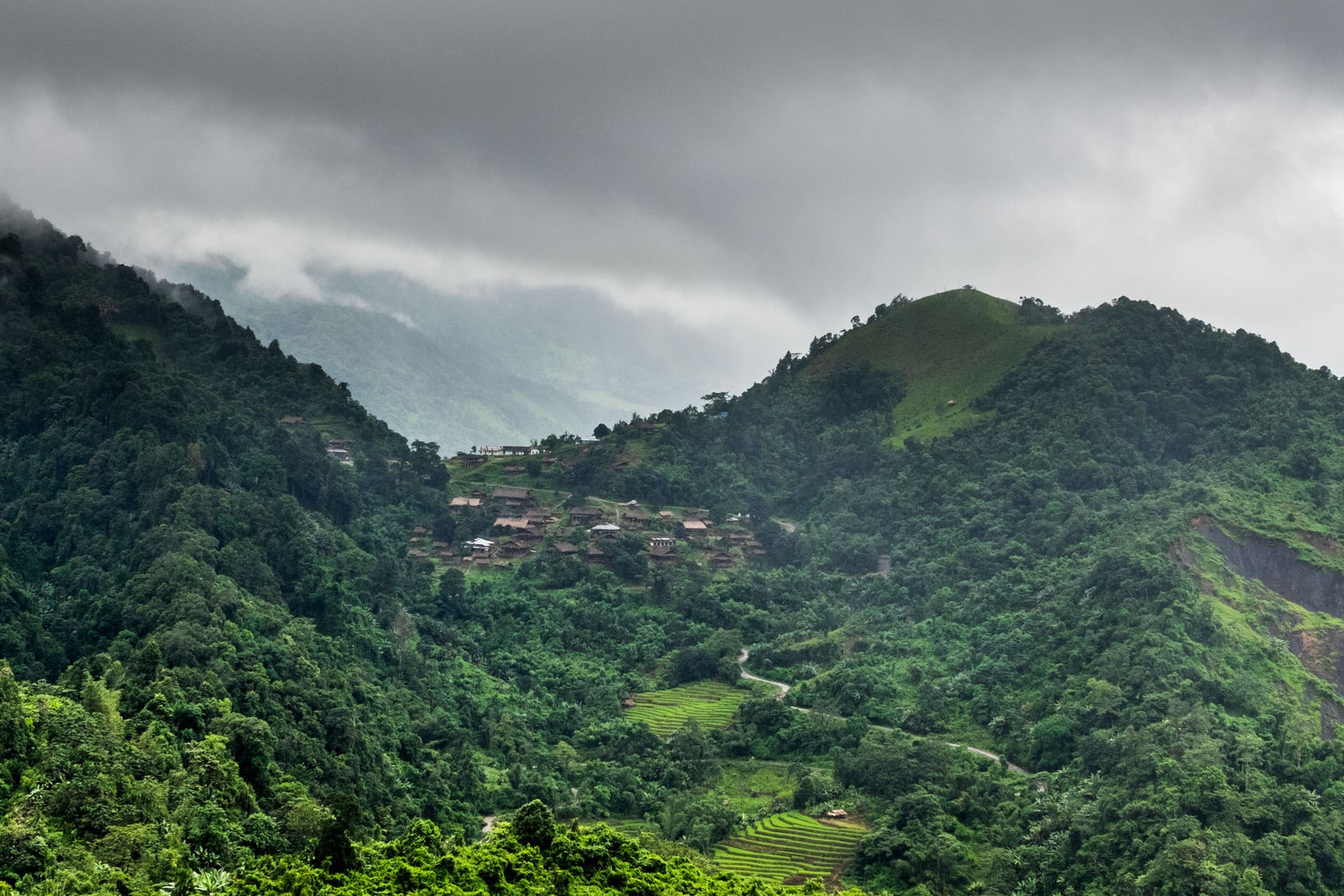
Bam, a small village with about 60 families, is about 7km from the town of Basar in the West Siang District of Arunachal Pradesh. Basar is thankfully on the map, and as instructed by our host family, we followed the map to Basar. The drive along the tree lined Highway 15 in Assam was beautiful, there were smooth roads and emerald tea gardens on either side with the jagged peaks of the Himalayas in the distance. We got to the Arunachal border in no time and after presenting our permits, started climbing again into the mountains. The weather cooled, and moods improved. There was chatter in the beat up old Sumo.
After spending two weeks in Western Arunachal, driving up to Tawang and Bumla, we were used to the stunning beauty of the state, with magnificent alpine forests, lush green valleys, brilliant blue skies and towering snow capped mountains of the Eastern Himalayan range. But this part of the state, in central Arunachal, was unlike anything we had seen. Forests that seemed older than time itself dwarfed us, bamboo stalks impossibly high, and banana trees (yes banana!!) with leaves that were way taller than we were. We gaped and gasped in wonder and awe, and felt very Lilliputian. It was a photographer’s paradise and we stopped often to take in the views.
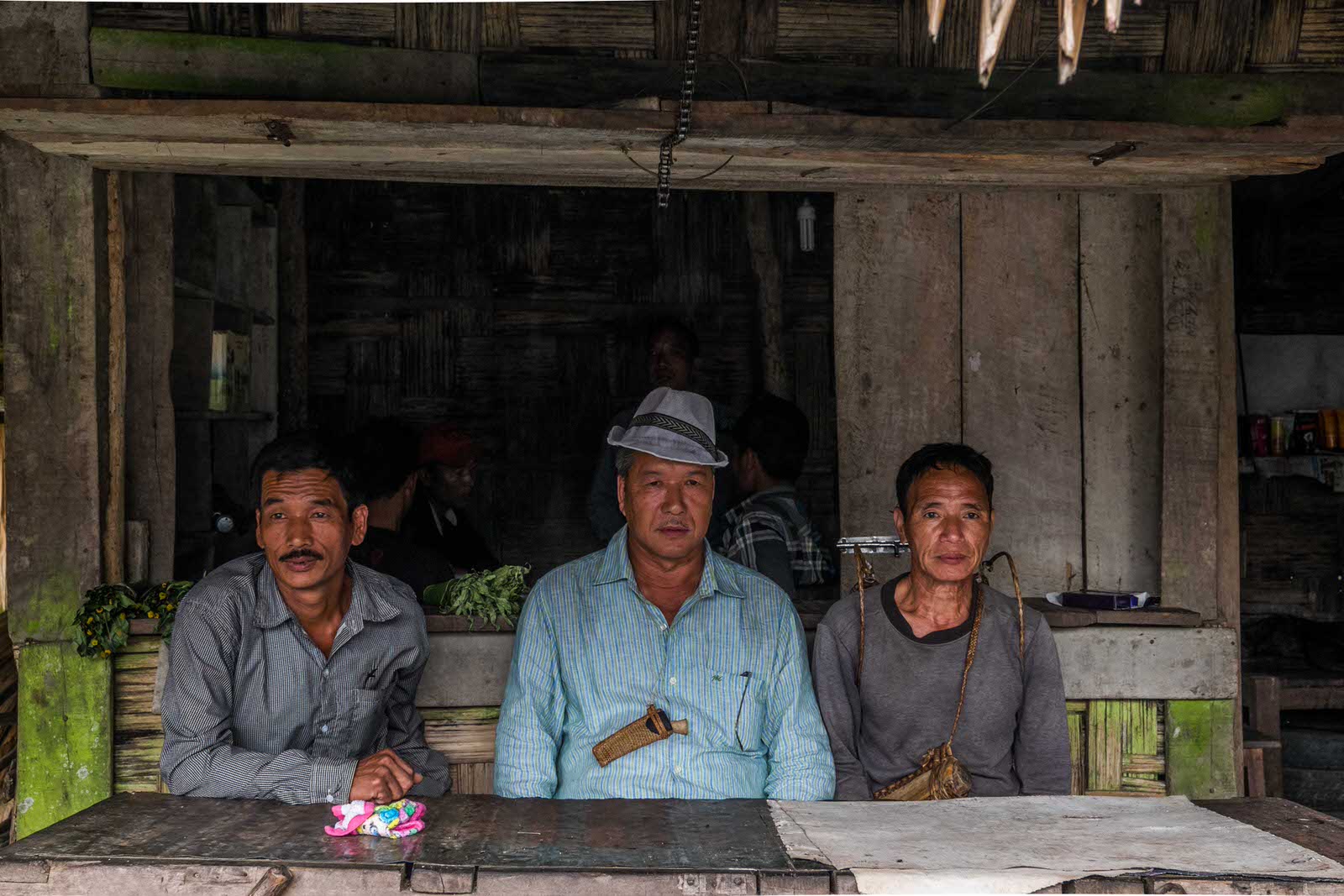
About 3 hours into the drive, we came across a tiny unnamed village market, with two little tea stalls, one shop and an intense game of cards. Sul, our friend from Bombay and the third traveller in the car, and I announced that we needed a snack. We always needed a snack! Our snack stop, with many cups of tea and Marie biscuits, ended up being almost an hour long, as we chatted with the tea stall owners and joined the few spectators of the card game. On mentioning that our destination was Bam, we were met with more than a few surprised stares, it was not a place that saw many ‘tourists’. We explained that we were staying with a local family, and on mentioning the patriarchs name, suddenly everyone was friends.
The family we knew was Tabom Bam’s, who is famous across the state, and especially that region which is inhabited by the Galo tribe. He was the first member of the tribe to be inducted into the IAS, and retired as the Chief Secretary of Arunachal. A well respected man he now lives in his village, Bam, with his wife Toby, dispensing counsel and running the school he helped set up. He had been adopted by my grandparents at the age of 15, and it was his house that we were headed to.
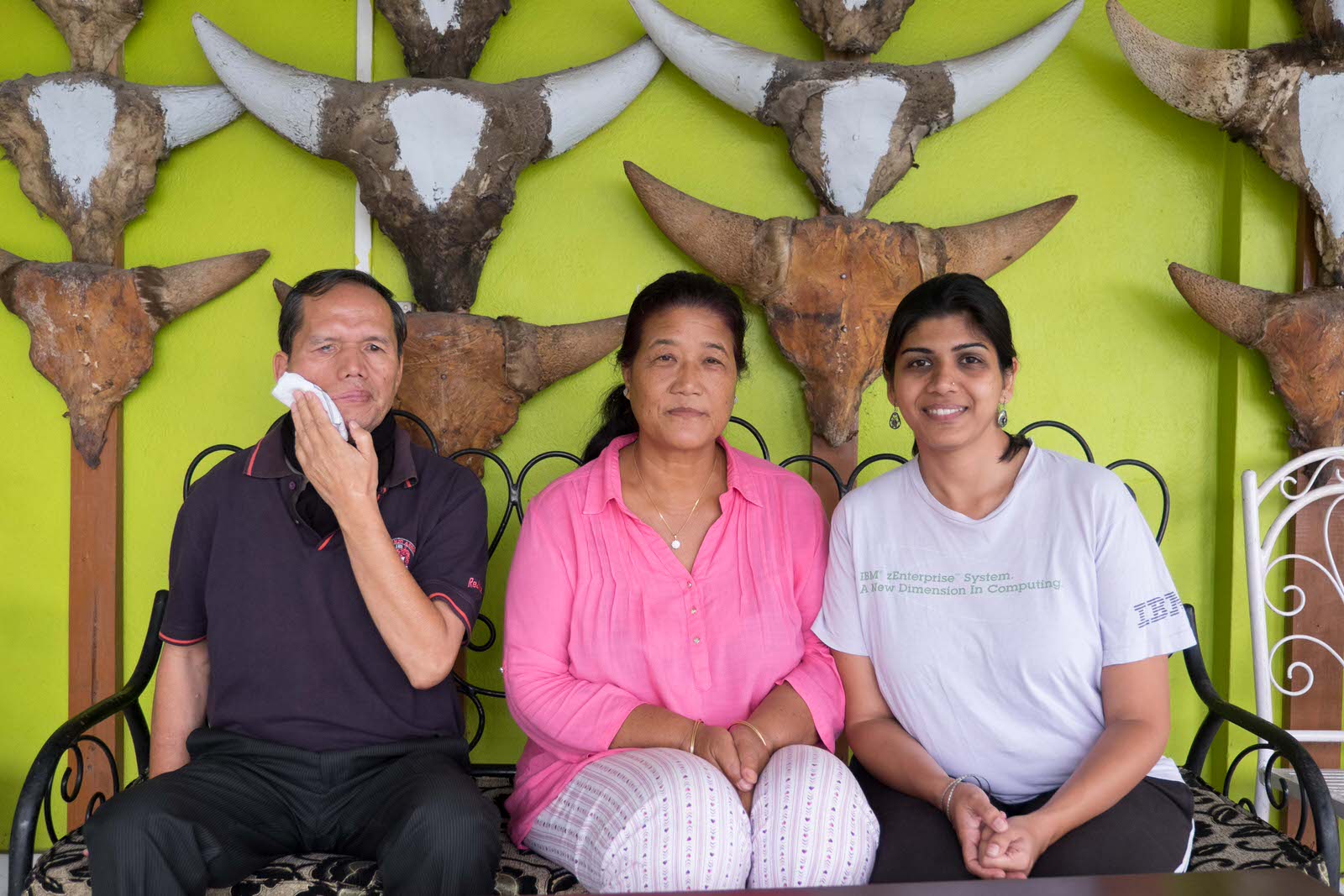
A few hours later we reached Basar, a fairly typical small town in Arunachal. The town is the block headquarters and boasts a couple of banks, several bakeries, a government office with a rest house, several small stores and the usual market of vegetables, animals and crop. We also saw several men and women carrying swords, slung on their backs or tucked into their hand woven skirts. In Arunachal it is common to see men and women carrying swords or small knives, as they go about their day. We later learnt from Toby, that they are carried for practical purposes, to be used in the fields, everyday village life, to hack ones way through a forest or simply in household chores. They will never be used to harm another human or kill a Tiger which is sacred, and never once did we feel threatened by the abundance of swords.
After asking for direction in Basar we drove the last 7km to Bam, a drive that took almost an hour due to the heavy rains a few days earlier that had washed away the roads. This is Arunachal! We passed the school that Tabom had set up and then came upon the village of Bam. Small, spread over the mountain slope, with glossy green fields below, it was beautiful and magical, like only villages in this region can be. After two weeks of travelling around Arunachal and bumping around in the old sumo, it was the perfect place to unwind and enjoy rural Arunachali life. Even Ajay, our driver, was happy. The Bam family welcomed us warmly, especially Hoshner, who the whole village soon realized was magbo, or son-in-law.
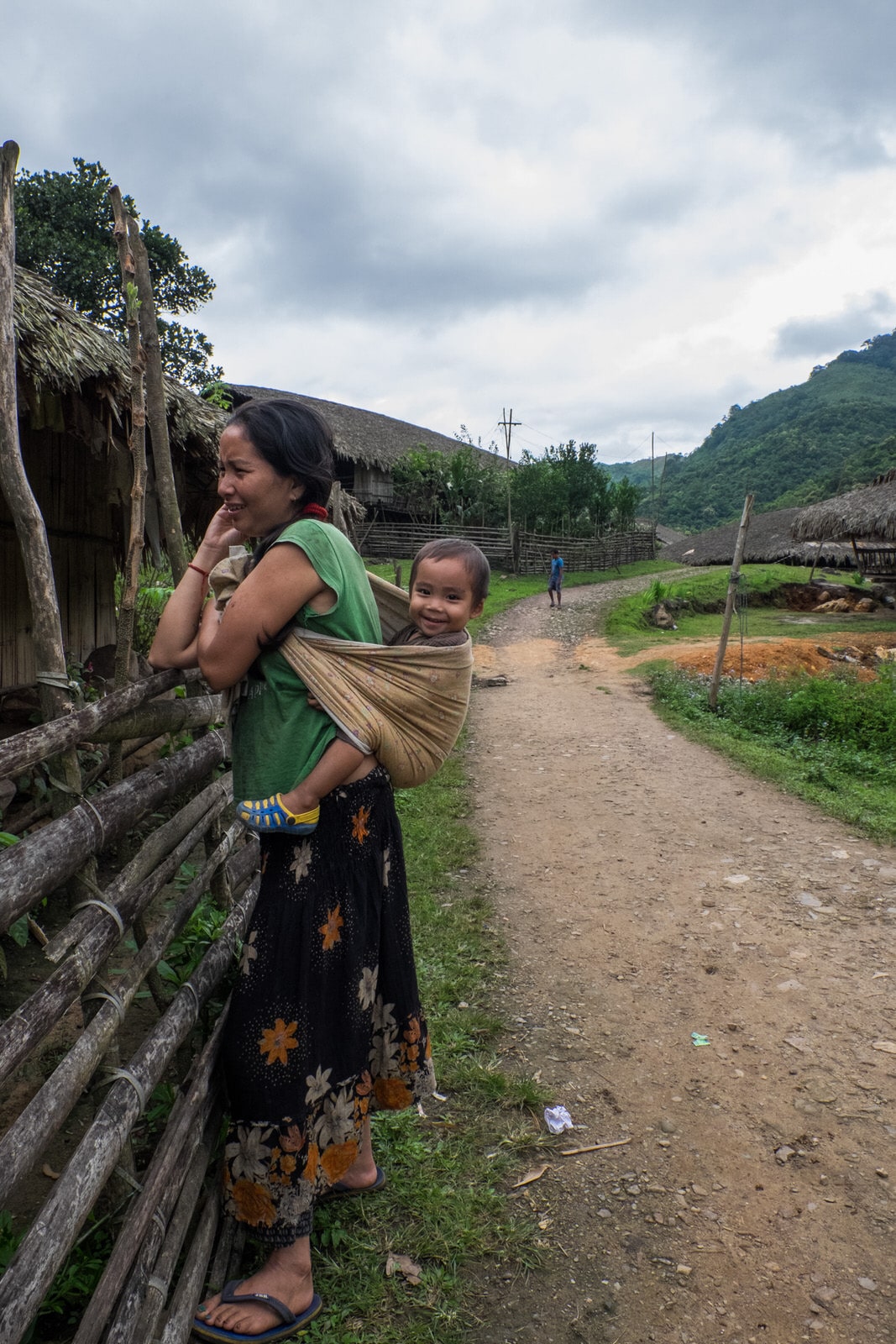
We spent an idyllic three days in Bam. The electricity had gone the day before we arrived due to the heavy rains and while our hosts fretted about it, we didn’t. Phones were charged in the car long enough to message home, and days began at 5am and ended by 9pm. Being so far east, Arunachal which should have an earlier time zone, doesn’t, and life begins early. By 8am we would find ourselves ready for the day, having had a massive breakfast and the necessary amounts of laal chai. The days were spent walking around the village, doing short hikes into the hills above, attempting to work in the farm owned by the Bam family, and taking in the clean cool air. We sampled local homemade cuisine, including oik, a green fern type vegetable, deer cooked in hollow bamboo stems without using any utensils, fresh fish from the river, and some amazing lightly spiced chicken roasted over an open kitchen fire.
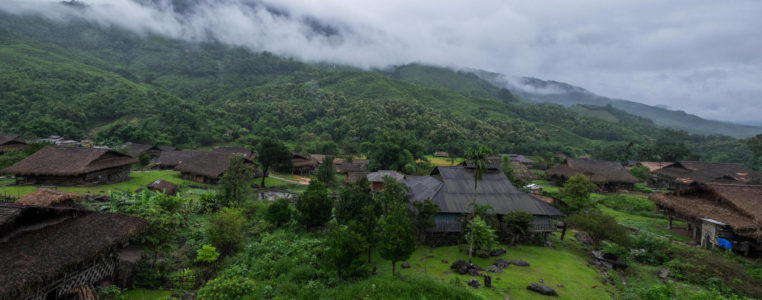
One afternoon we went to eat with the farm hands, and I spent an hour in the fields making comical attempts to harvest the paddy while the boys took pictures and laughed. I however got my turn to point and laugh at the two Bombay boys, for lunch was served on the ground, amidst piles of husk, on banana leaves with no cutlery! It might have been the only meal where I finished first! Food was light and flavourful, with minimal oil and almost no heavy spices. A lot of it is boiled, and in the cold evenings, with stars above, dark silhouettes of the mountains around the valley and the animal calls far in the distance, a big bowl of vegetables and meat boiled in a soup warmed the soul.
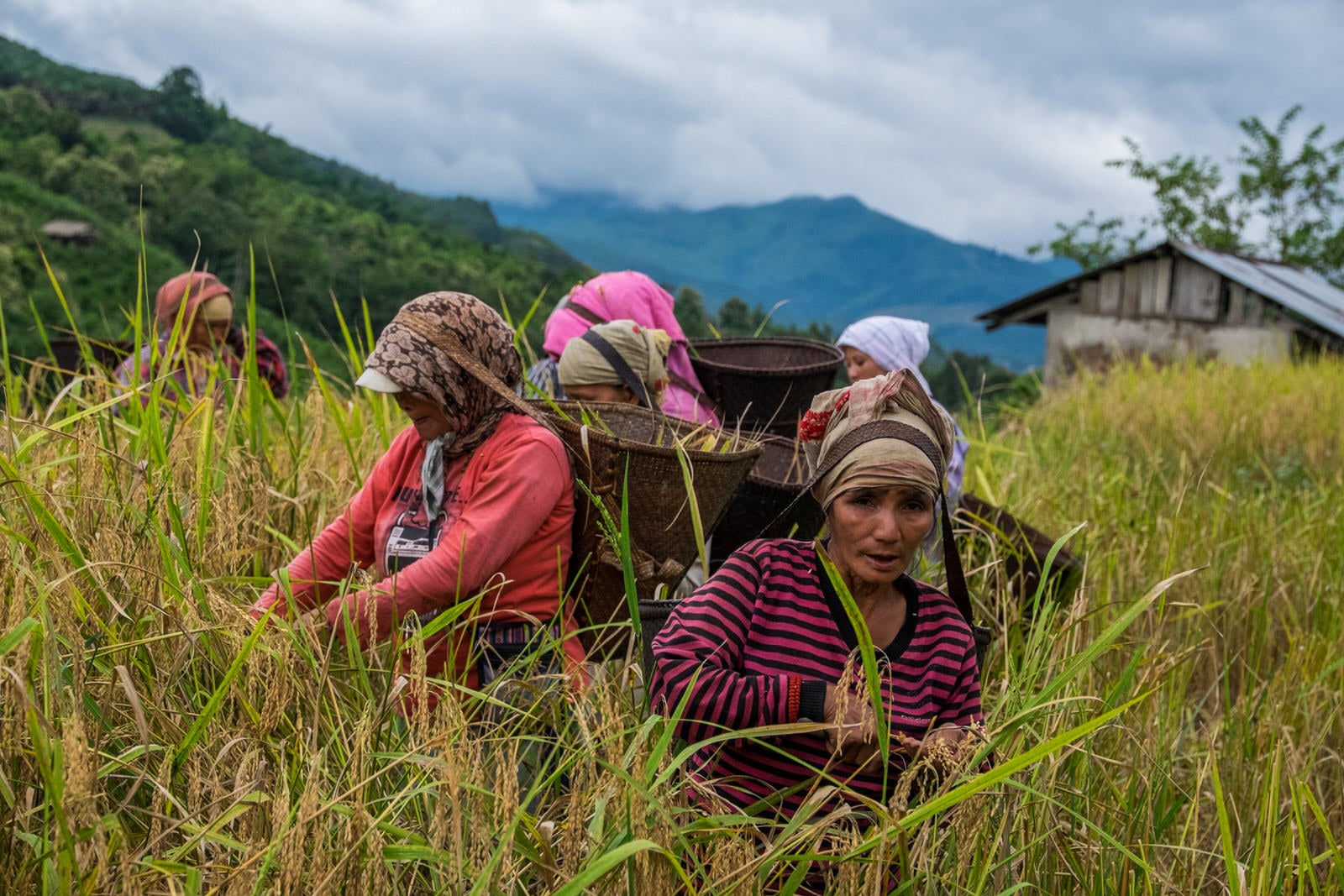
The Galo’s are an extremely friendly people and happy to talk about their culture and way of life. Though populous by the regions standards, they are a slowing dying tribe, and are attempting to document their language and traditions, so it one day might survive them. Traditionally they practice shifting cultivation and live in tune with nature and the changing seasons. ‘We will never starve’, declared Toni, Tabom’s son and heir, as he drove us to Ego, a nearby village to meet his friends and fish in a fast flowing river. The people of the region only fish, hunt and cultivate in seasonal cycles and in harmony with nature, allowing the environment around them to maintain a balance. Fishing for example is only done with rods and bows and arrows, so people catch what they need and not waste. We spent a fun day in Ego with new friends, eating varieties of beef and chicken with rice, fish caught by Tony and his gang, and drinking apong, a home brewed rice beer.
Life in Bam follows the slow rhythm of nature. Galo homes are traditionally built on stilts with a balcony that wraps around the inside of the house, and space for cattle below. Heads of slain Mithun, the state animal, slaughtered for ritual sacrifice and other hunting trophies line the outside walls of many homes, a sign of prestige and stature. Men and women have separate entrances and spaces in the house, though this is now largely followed only during festivals and other big occasions and family gatherings. The wrap around balcony is great for gazing out at the stunning scenery and landscape or reading while the mist slowly rolls down from the lofty Himalayas, bringing the twilight with it.
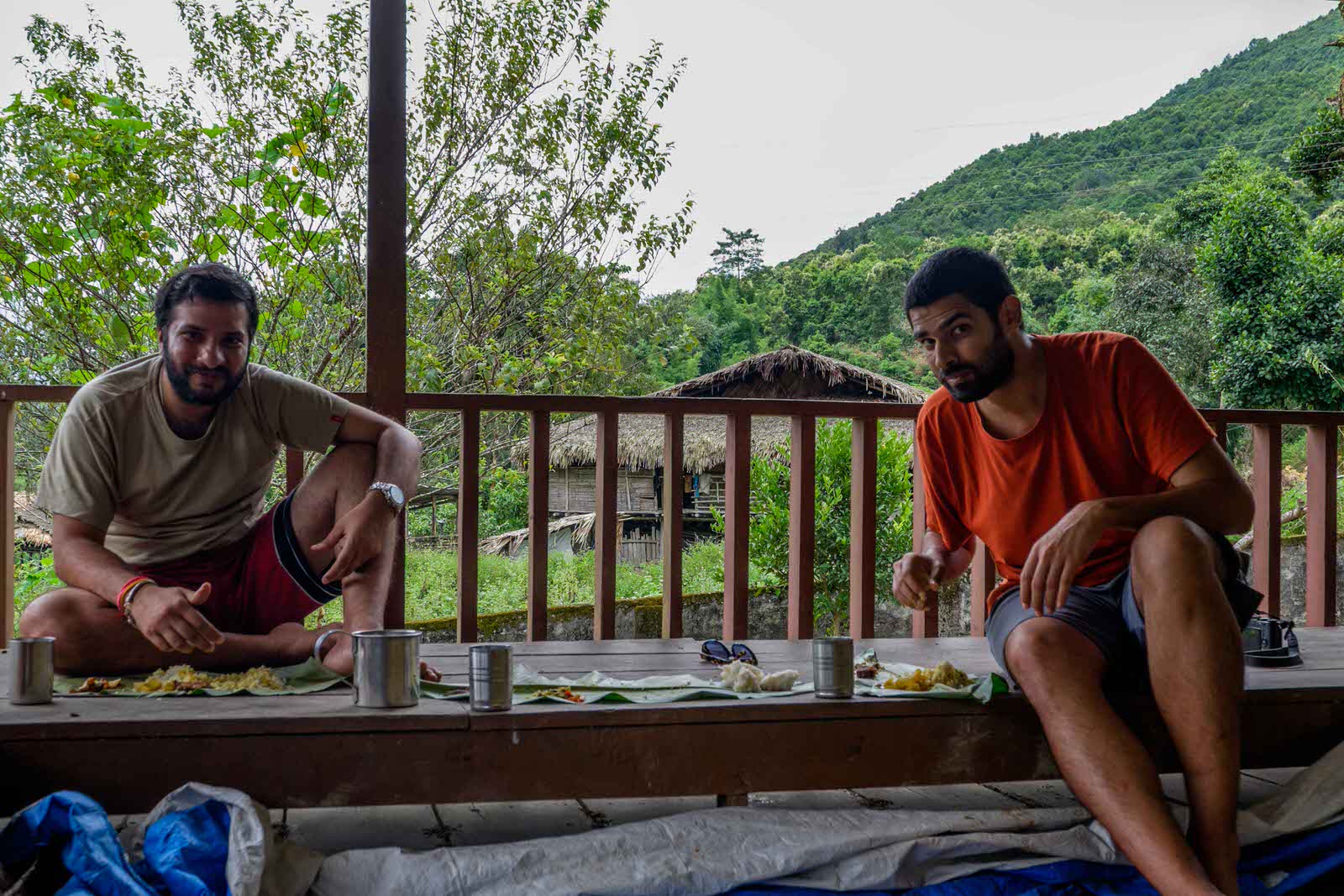
Three days went by quickly and soon it was time to move to our next destination. We were loath to leave and delayed it with excuses, till finally the driver got into the car with a purposeful honk. As we left Basar and drove back into the wild dense forest cover it was a bittersweet moment but we were ready for our next adventure. It was an experience that touched us deeply and we knew then, that a large part of our India explorations would be spent in the villages of this country. Bam was the trigger than made us actively seek out a connection with the villages of this land from Nagaland and Meghalaya to Punjab and Kerala . En route I got a message from Toby, the electricity had come back, and we laughed, only too happy to have spent our time in Bam with the Galo tribe, amidst their raw warmth and hospitality.
Some Useful Information:
Getting there: Bam is 7km north of the town of Basar. The nearest airport is Dibrugarh and the nearest train station is either Naharlagun in Itanagar or Tinsukhia in Assam.
Where to Stay & Eat: Basar has a Government Rest House which can be booked through the Arunachal Pradesh Tourism Offices or State Bhavan. You can also stay in Aalo which has several small hotels, about 50km away and make a day trip to Bam. Both Basar and Bam have small eateries and tea stalls that serve local homemade cuisine.
Dont Miss: Everyone in Bam village has the surname Bam and life is similar to one large extended family. Galo Children are named after the last syllable of the father’s name, which becomes the first syllable of the child’s name, and thus can trace their family history back generations.
A version of this story first appeared in the September 2016 issue of Discover India Magazine.
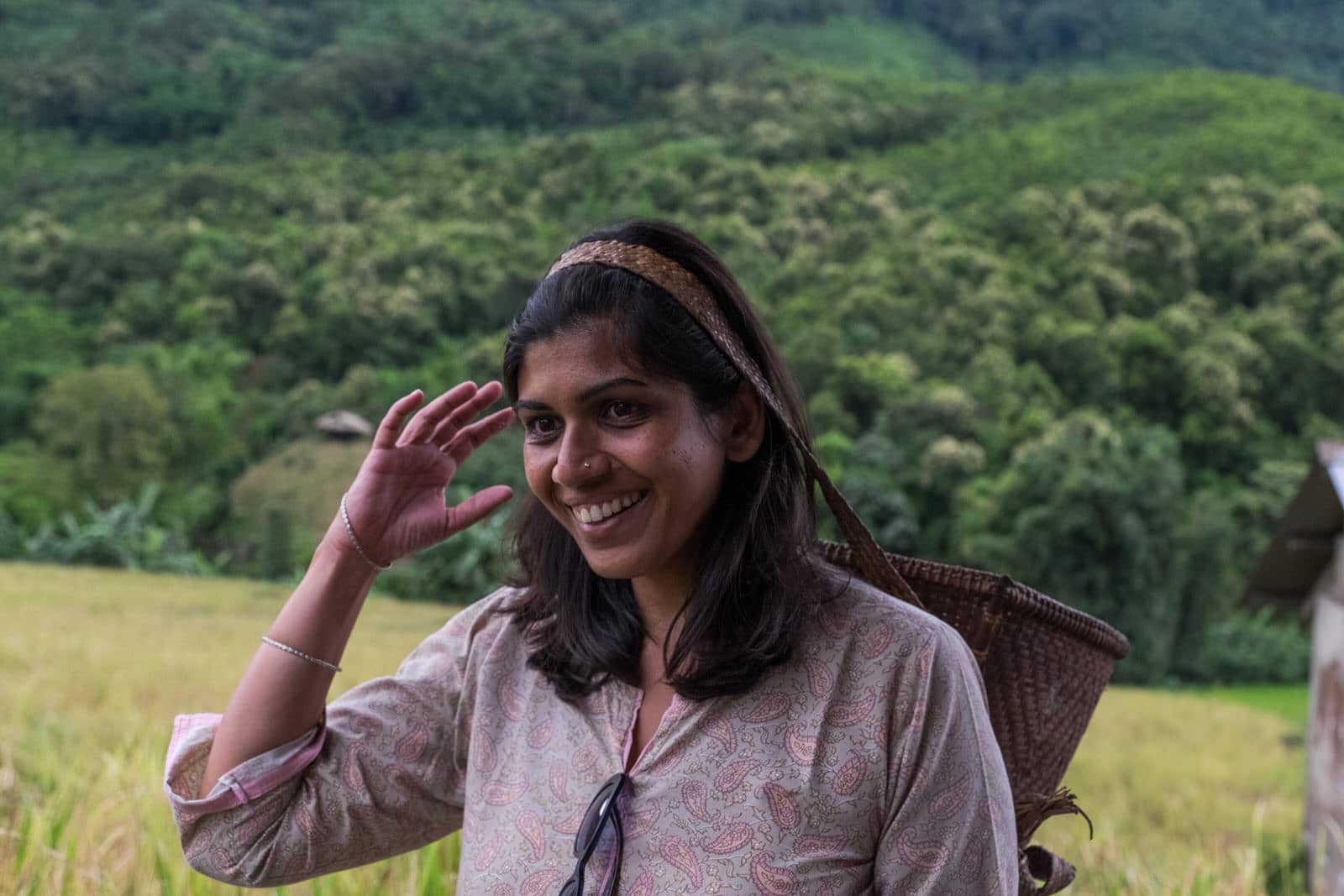
Loved reading this! I’ve been first introduced to this green, wild side of Arunachal before I got to the high-altitudes, which is frankly quite the same as in Sikkim, at least topographically. And that’s the Arunachal I absolutely fell in love with, such a different world from anything I’ve ever known.
Also, so fascinated that you have an adopted family in this little corner of Arunachal?! I need to hear that story. 😀
Thanks Neelima! Glad you liked it The enduring memory we have of Arunachal is the dense, almost otherworldly jungles! So surreal! We were mostly in the western and central part, hope to explore East Arunachal soon. The adopted family story is something we can talk about over coffee 🙂 Been following your Arunachal updates, looking forward to reading the stories!